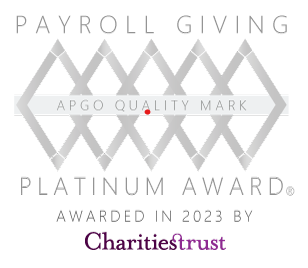Data and transparency in sustainability
by Tara Luckman

As a sector we have been discussing supply chain transparency – trying to define it, justifying the need for it, and working out how to obtain it – for what feels like decades. We want to know the history of our garments, and in unveiling their history we want to probe specific data that will help us do better. So, we think we know what we want… but do we? The devil is in the detail, as many of us have learned the hard way.
As a quick digression into my personal experience; my direct ‘learn the hard way’ journey came during my tenure at ASOS.com, overseeing the commitment to increasing supply chain transparency beyond tier 1 (garment manufacture) with a number of pilot projects. You name it, we tried it, from the painful manual mapping of the leather supply chain through supplier enquiry, to the excruciating and fruitless testing of ‘plug and play’ blockchain solutions that would fail as they had been built for much less complex food and drug value chains.
Progress a few years back felt depressingly difficult and way too slow, but I feel positive in 2021. I am encouraged that we as a textile sector are maturing in our approach to this challenge, and suggest we could at last be approaching a happy tipping point where appetite, investment and capability converge.
What appetite?
I could cite a long list of sustainability claims that have been challenged, making brands fearful to communicate their achievements at time when they so desperately need to demonstrate progress. Customers and regulators are holding businesses accountable, challenging them on distant targets and questionable measurements. Nobody wants to be at risk of ‘greenwashing’, hence the call for robust and verified data on sector sustainability efforts is loud and clear. Brands can no longer justify sustainability initiatives based on qualitative evidence and second-hand improvement claims, nowhere better unpacked than the recent Transformers Foundation case study on misinformation.
What investment?
Or as we more commonly ask, ‘who pays?’ – another dimension I have seen shift in recent years. For a long time, there was no return in sight for businesses pursuing supply chain transparency. Whilst still not mature, we can see clear signals from the financial sector as they actively ‘look and learn’ about business progress in this area, making it a factor of ESG scoring and therefore value for shareholders. Investor benchmarks are becoming more formal, and are calling for standardised data. Quantitative assessment frameworks such as the Global Reporting Index have been popular with investors. So now we know ‘who pays’ – the value of this important due diligence for brands will be baked into the value of their businesses in black and white.
What capability?
When we see multiple examples of transparency initiatives across the sector, surfacing data for a range of priorities from animal welfare to water management, and these activities reaching collaborative platforms, we can take comfort that the capability is mainstreaming through ‘do and learn’.
One concrete initiative I stand behind is the U.S. Cotton Trust Protocol which verifies sustainability progress through sophisticated data collection and independent third-party verification that provides members with better transparency about the cotton entering their supply chain. This data-based approach, backed up by independent, third-party verification from Control Union Certifications, gives brands and retailers the critical assurances that the cotton fibre element of their supply chain is more sustainably grown.
In parallel, the adoption of next gen transparency systems for certified materials at the Textile Exchange, or the standardised approach to value chain metrics championed by the Sustainable Apparel Coalition, are further examples of initiatives working to create measurable and quantifiable data as the backbone of success and credibility in their work.
And finally, my closing thought for now is one of accountability. Both the UNECE and the EU have made transparency of the textile value chain a priority, heralding a supporting policy framework that will ultimately govern green claims and empower consumers – another tipping point I look forward to.



